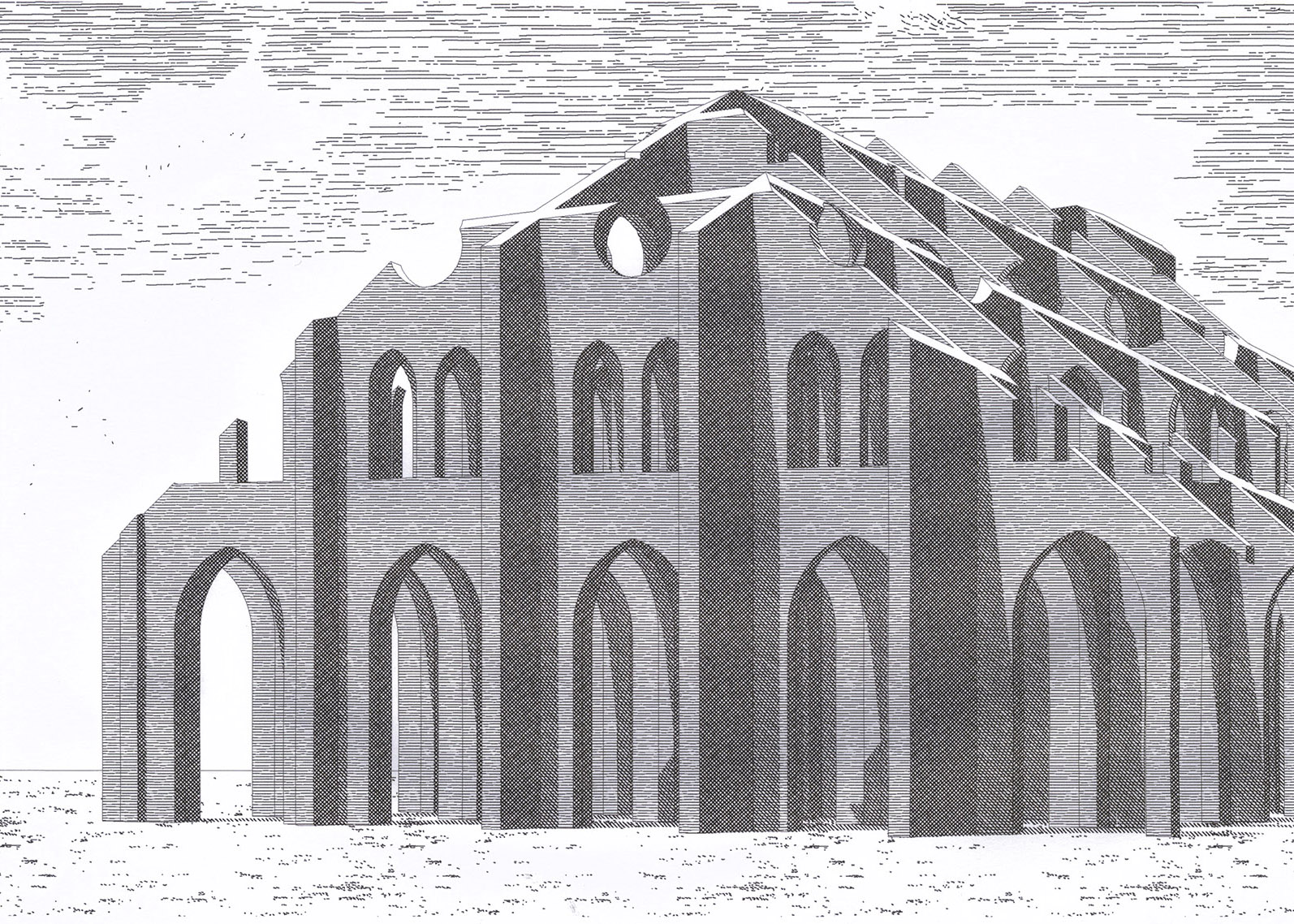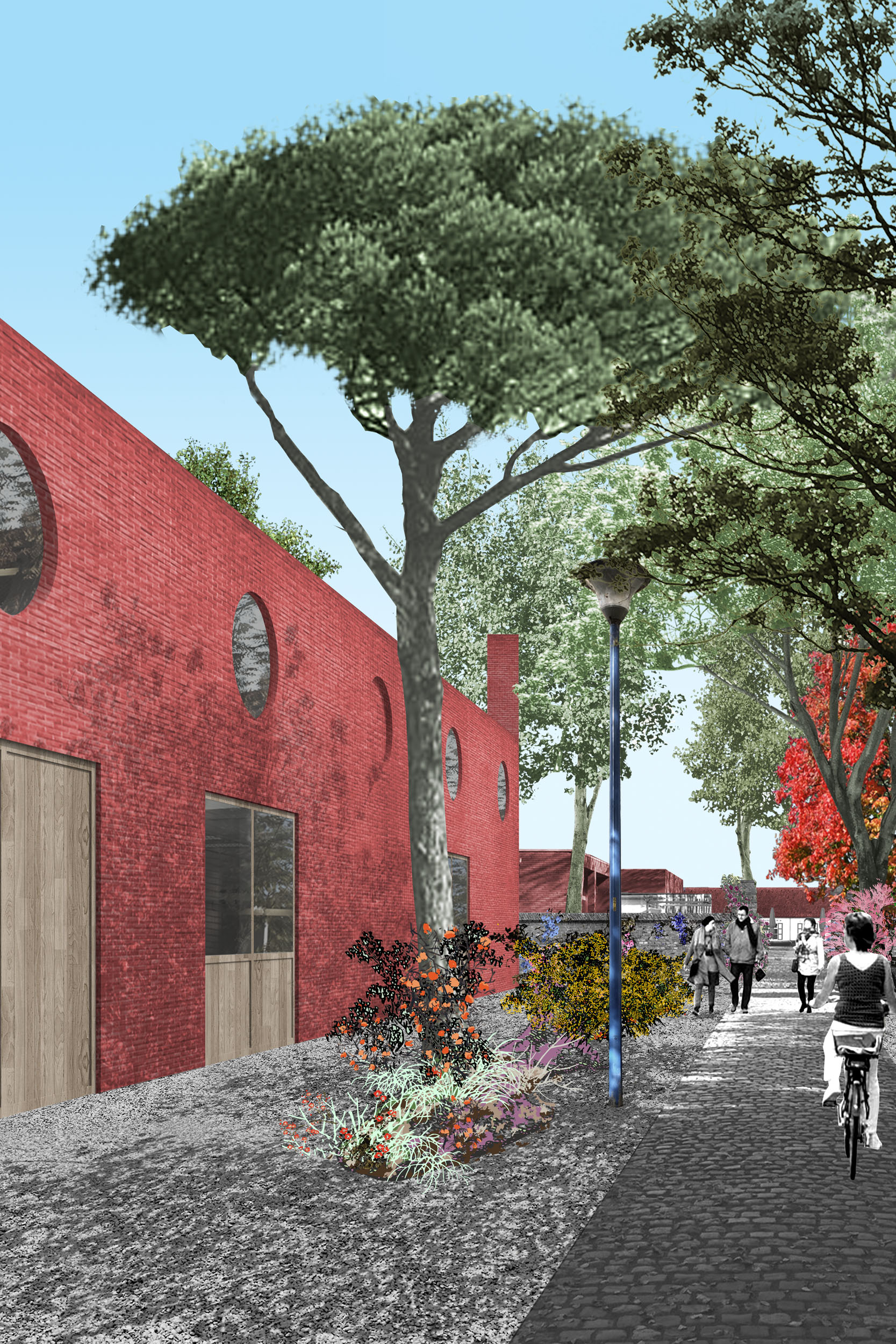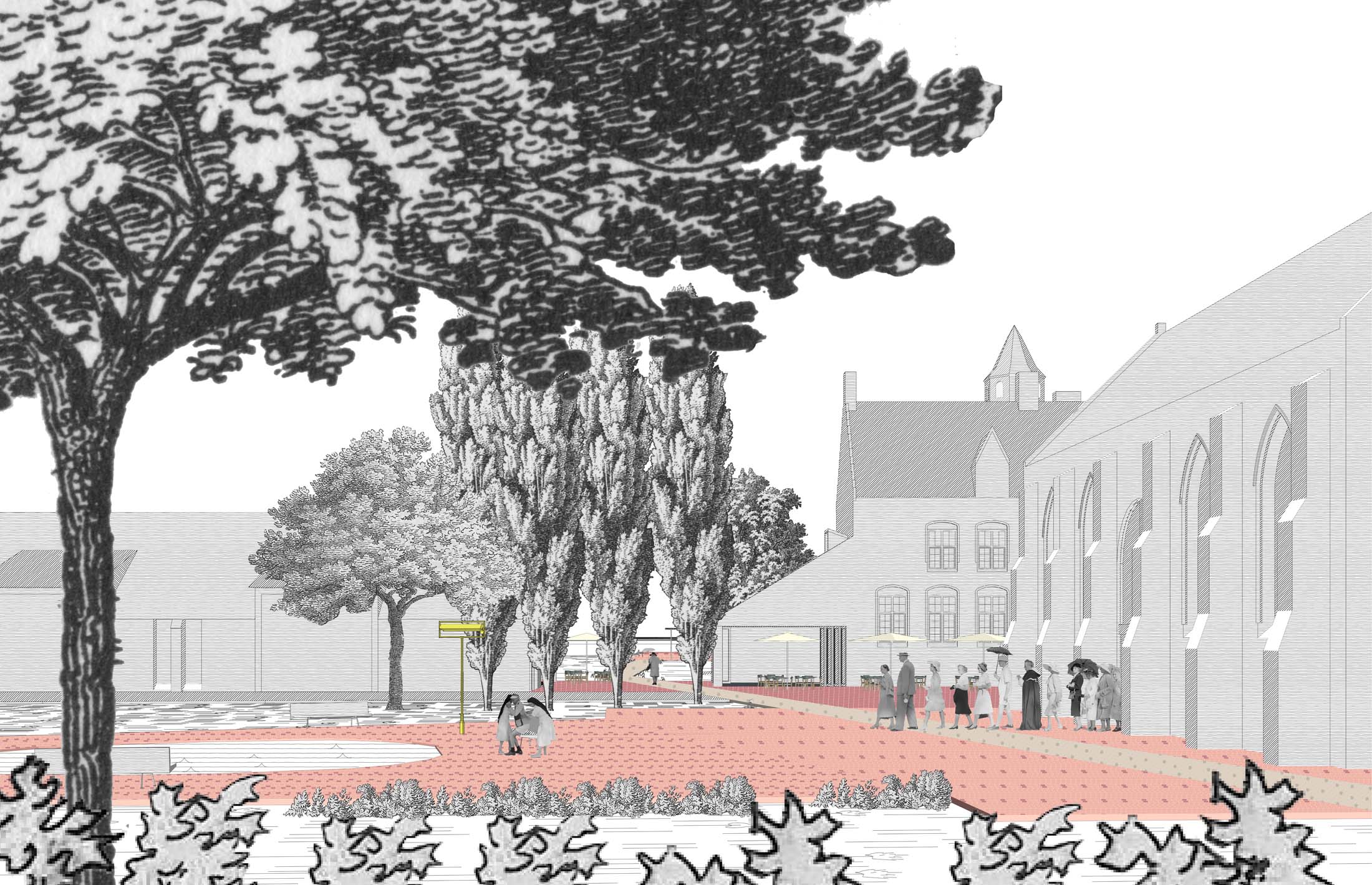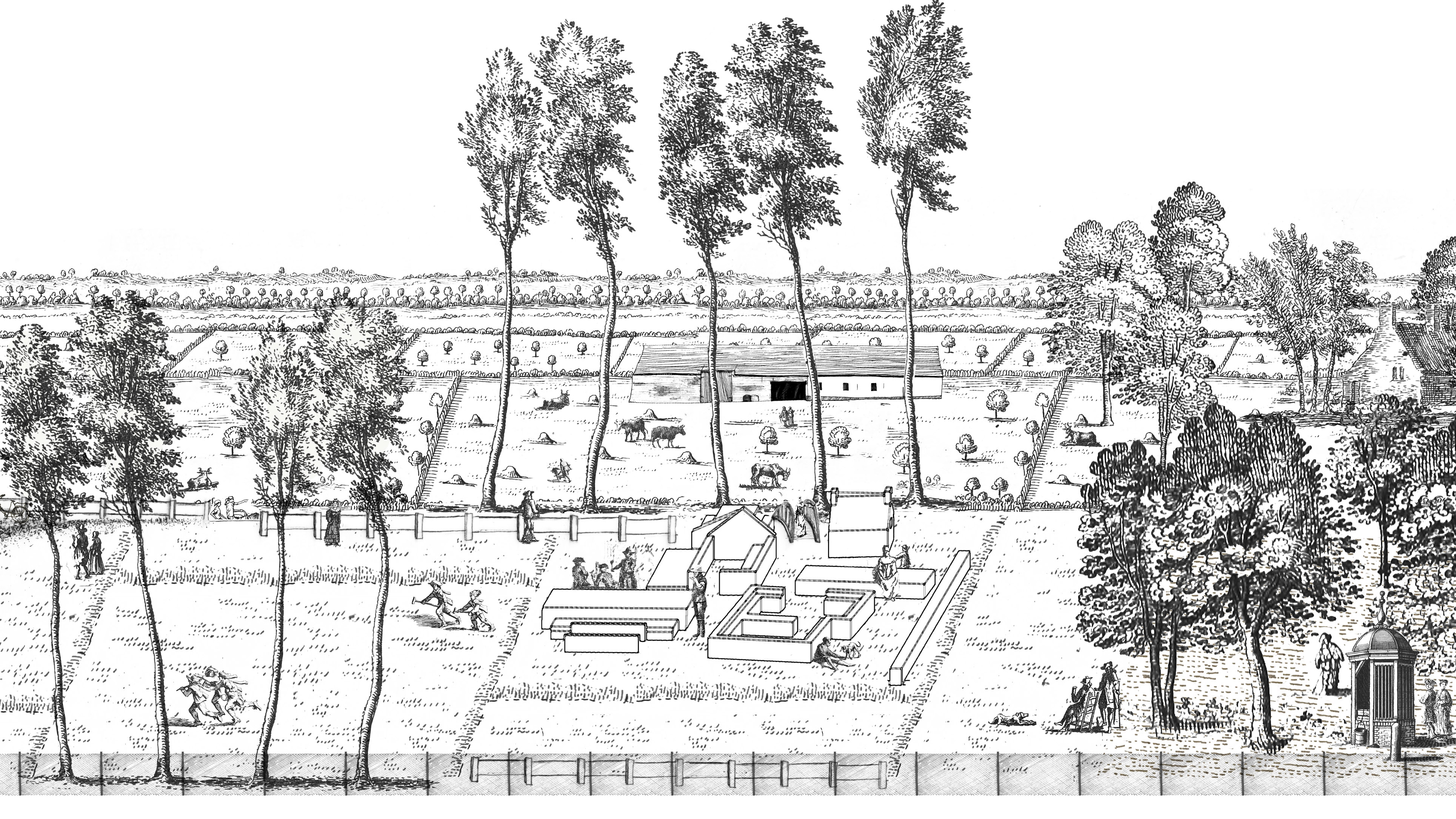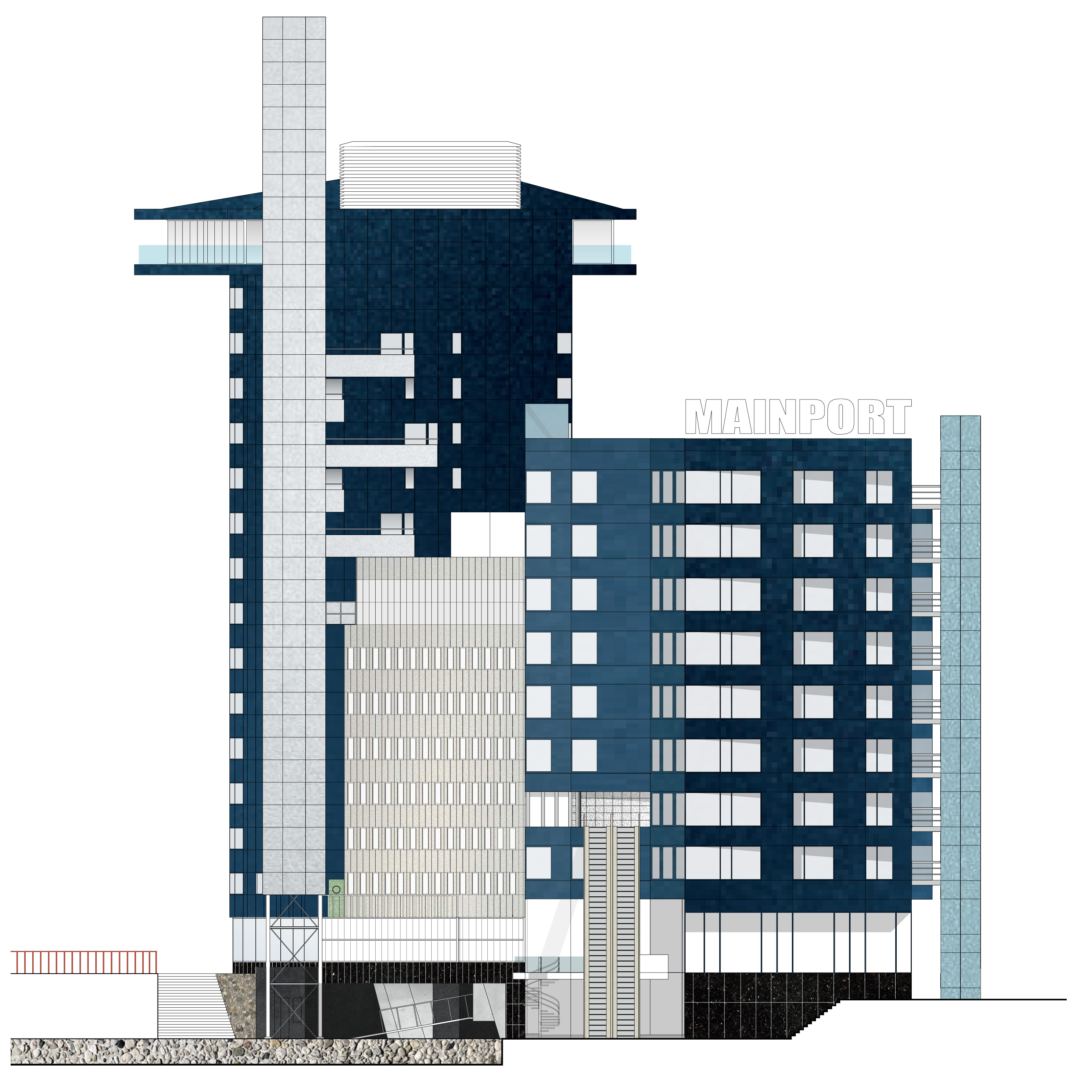SEISMIC RUIN
Hongerige Wolf, 2019
The man-made polder stretches until the horizon. No memory of a natural past can be seen. In this rational landscape, time does not seem to exist. Yet underneath the surface the landscape is changing. So far, 94 houses have collapsed and 410 more have been slowly crumbling under the strains of gas extraction by the NAM Company in Groningen. It is a silent struggle where the ruined farms are removed and nothing bears witness to the continuous harm inflicted on this landscape.
![]()
![]()
![]()
The proposal seeks to construct fragile brick structures that could act as seismic instruments, displaying the pressures that are put upon the land by their slow collapse. Initially, the structures would be built throughout the fields, as ghost farms, assuming the silhouette of the surrounding head-neck-rump farmhouses and built from the bricks of the farms that have fallen. While these heavy brick entities would loom in the distance, the walls would appear precious up close, marked with motifs of the regional Romano-Gothic churches that connect the landscape and its tradition to the metaphysical.
In a traditional landscapist sense one would create a section of cultivated land in the midst of the uninhabited nature around. Yet here in the polder, surrounded by cultivation, a reverse approach might be better suited: a piece of unbridled nature contained within the order all around. When collapsed, these ruins would function as fragments of crude nature; as places to get away from the dominant trajectories of control. The ruins allow us to trace the passing of time and display this recent history. Looking across the fields, these mountains of bricks could even have been here before.
ARCHITECTURE: Marius Grootveld, Ghent
CLIENT: Mondriaan Fonds, Amsterdam
LOCATION: Hongerige Wolf
YEAR: 2019
STATUS: Open Cometition, no placement
